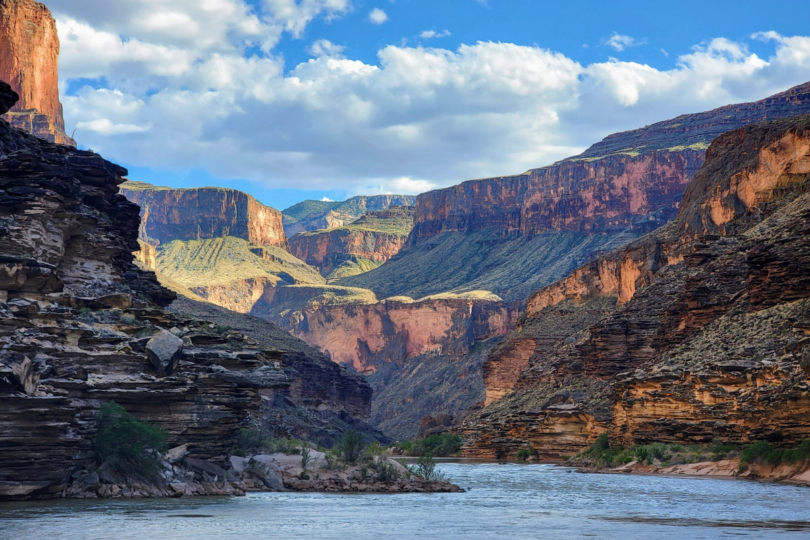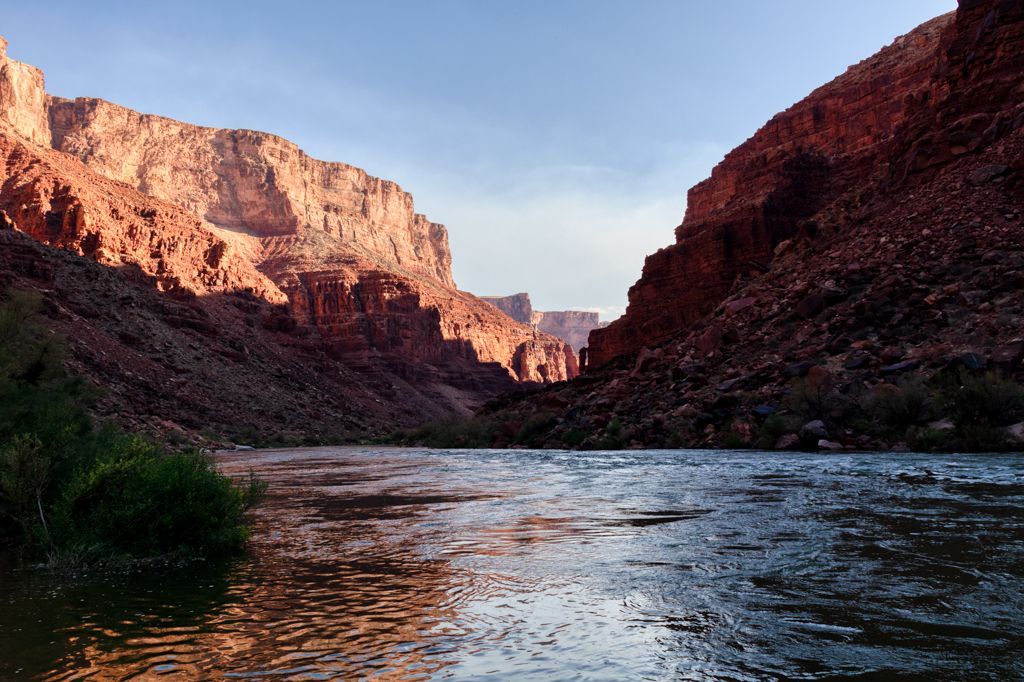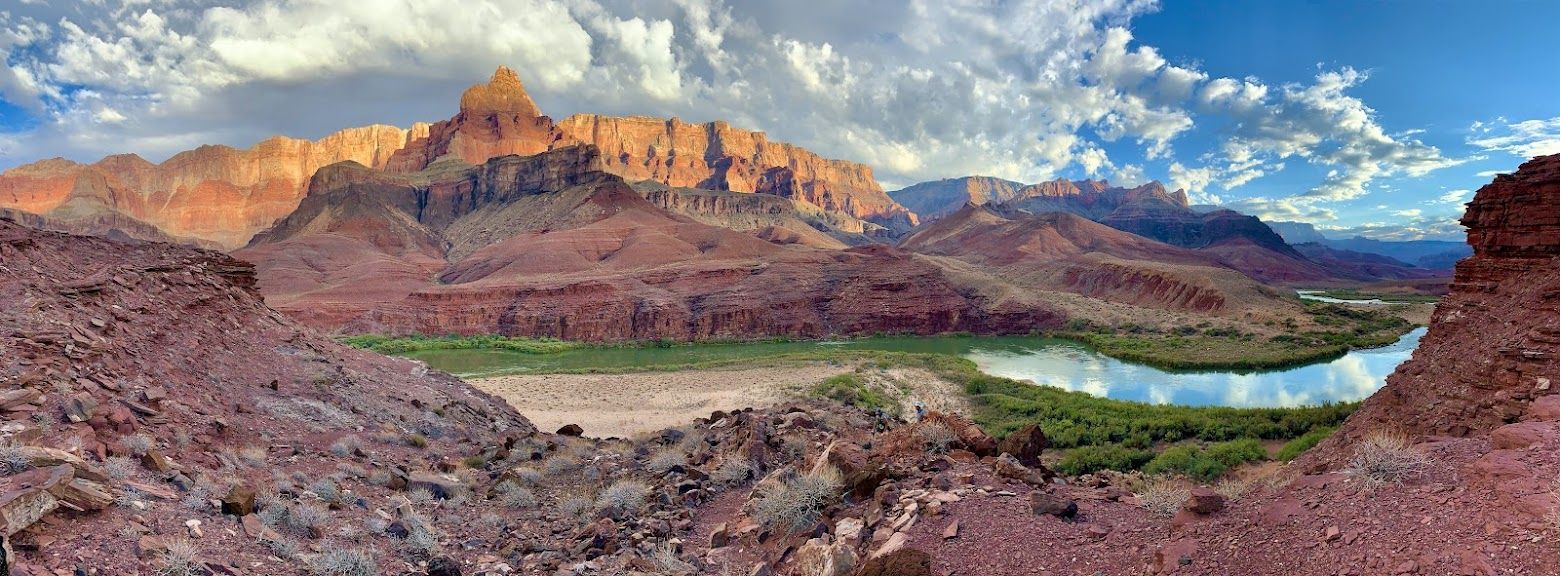Grand Canyon Flora – Part 1
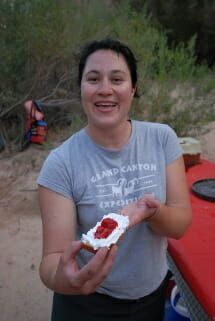
Pictures of a couple of the most prevalent plants in the Grand Canyon
According to the National Park Service, there are over 1500 known species of plants living and growing in the Grand Canyon. Our Grand Canyon River Trips go right through the heart of the Canyon – down the Colorado River. While you are on our trip you may get a chance to see one of the thousands of plants that call this place home. We would love to help you learn which plants are which, and the names of some of the most dominant plants that are in the Grand Canyon.
The Claret Cup Hedgehog Cactus (one of its many names) is a desert-living cactus that grows in gravelly soil. It can grow up to 2 feet tall and have offshoots 3-4 feet across but is usually much smaller. Most of the time, you’ll see a small rounded cactus with a flower on top (hence the name Hedgehog). The flowers on the Claret Cup vary in color due to soil and genetic variation. These cacti are found all over the South West.
Claret Cup Hedgehog Cactus
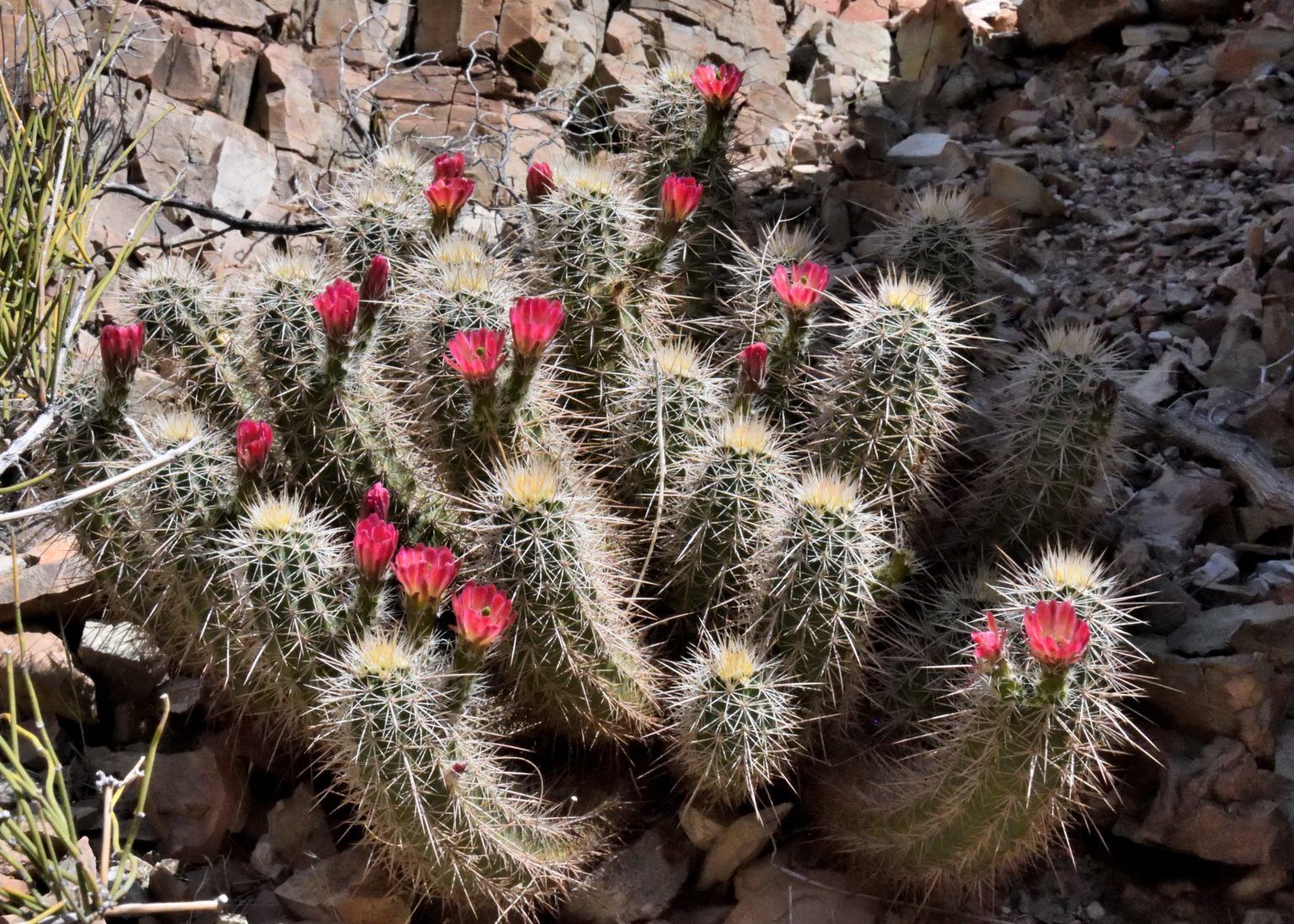
Hairy False Goldenaster
The Hairy False Goldenaster is an upright flower with green stems and yellow disk-shaped (like a daisy) shaped flowers. They usually grow in clusters of up to 50 stems and are known for the fine grey hairs on the stems. They are sun-loving flowers and do well in the arid desert environment. They usually grow in sandy, dry soils and bloom for a long while.
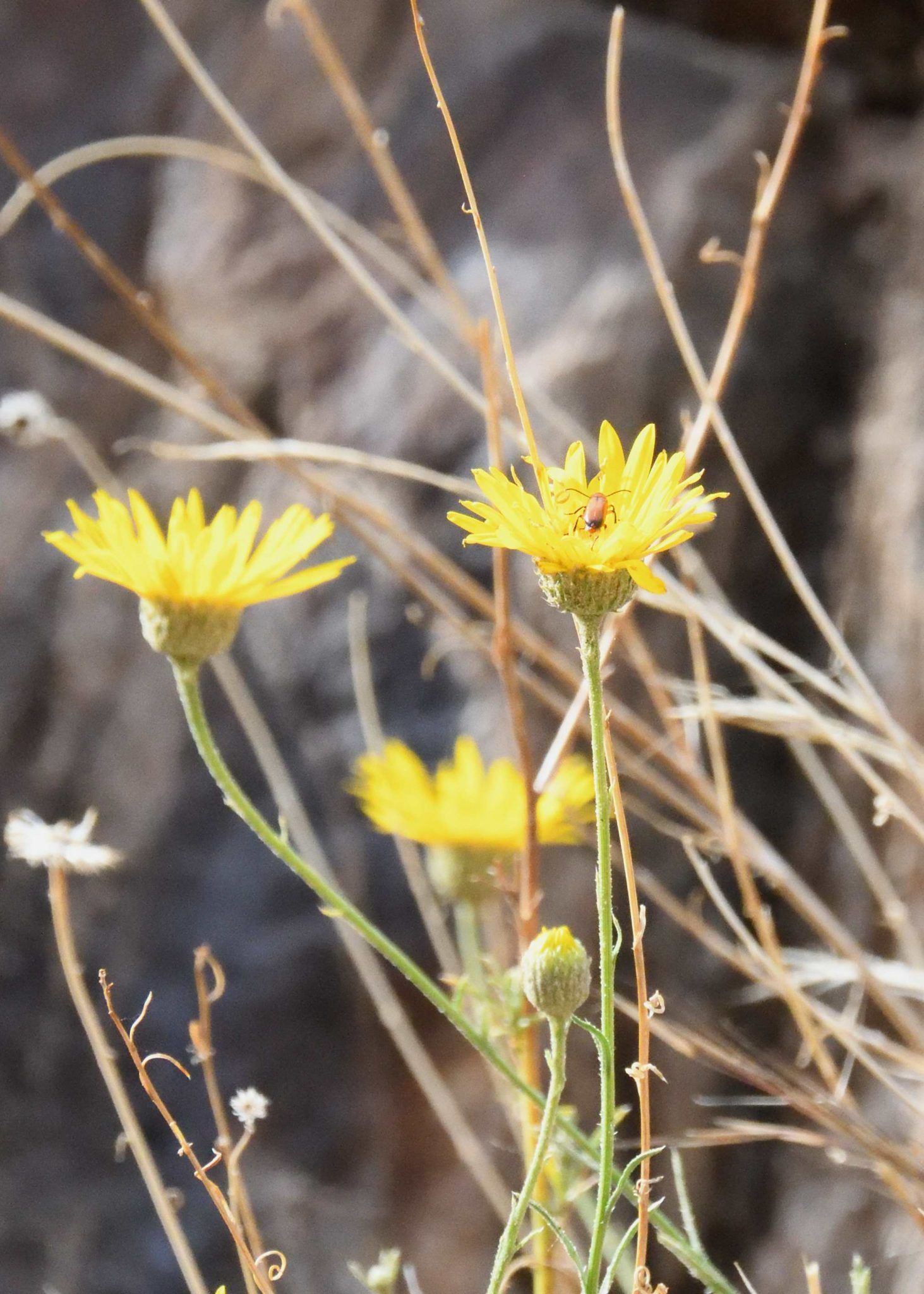
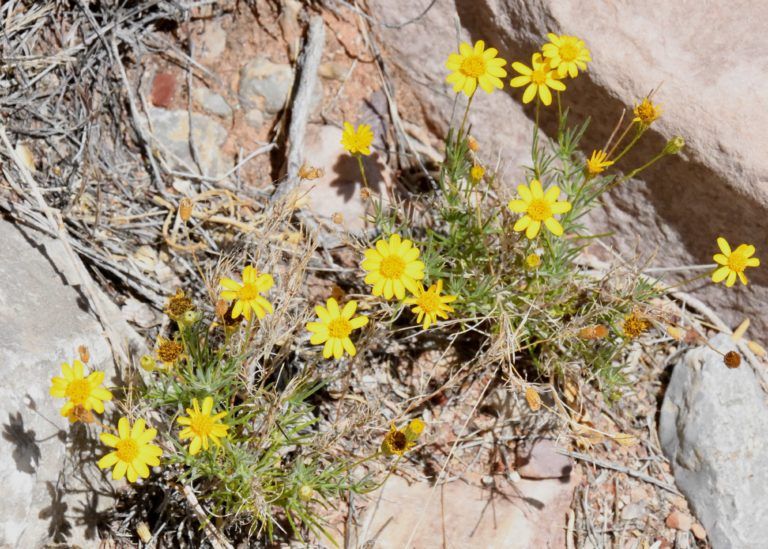

Desert Globemallow
Globemallows have tall, sage-colored stems with flowers that bloom near the top of the plant. They have a fine coating of hair that can be an irritant if it gets on your skin. Grouped in rock, sandy washes, and desert terrain. They do well in full sun and drought environments. They bloom most during the spring, but a summer rainstorm might also make these flowers bloom.
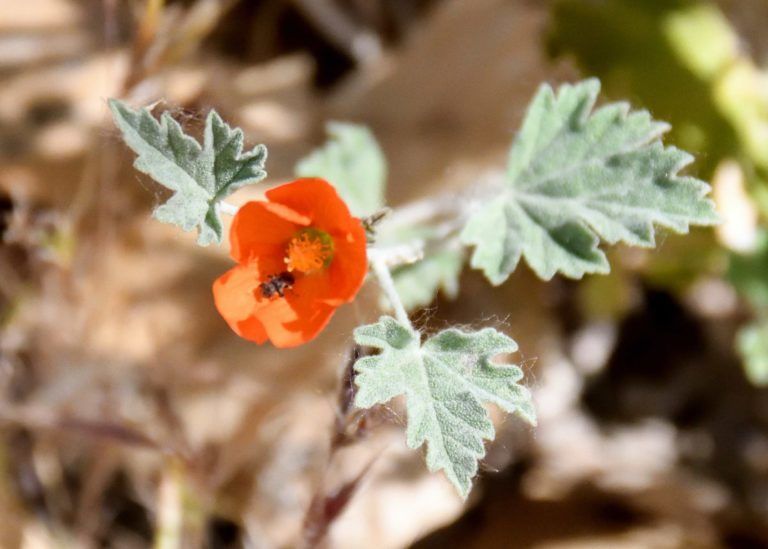
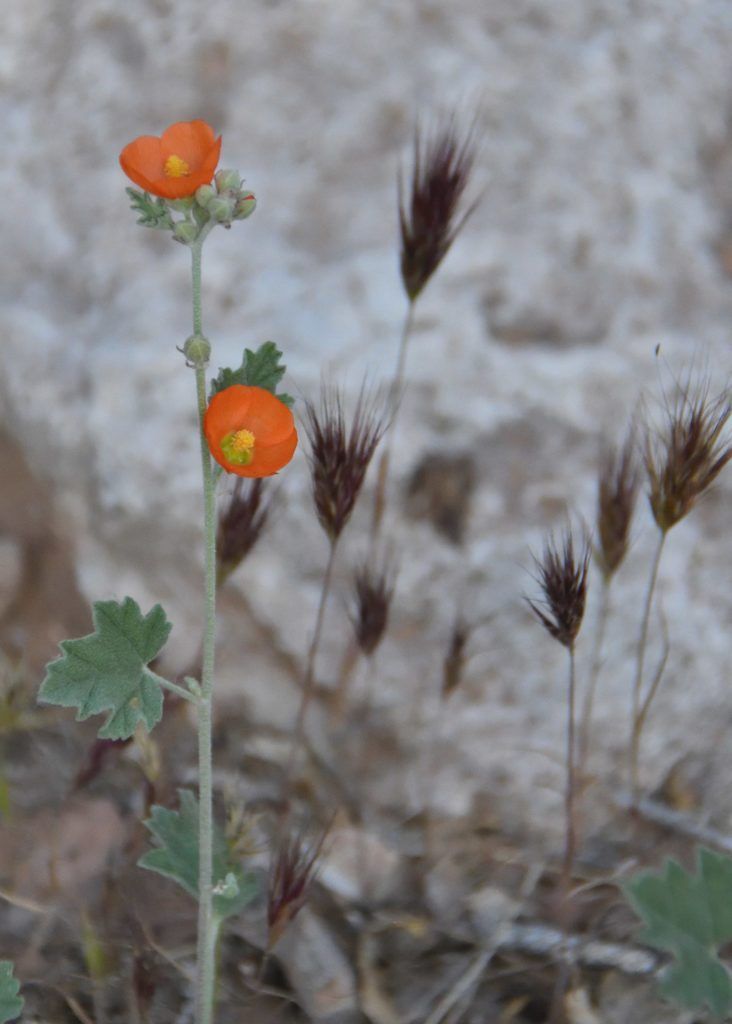
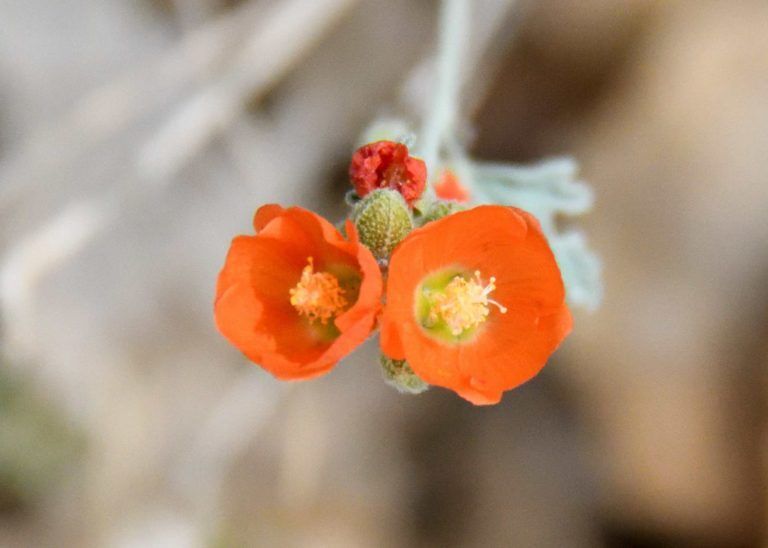
Ocotillo
Ocotillos are large plants, with a trunk that grows long spindly limbs. The limbs grow spines on them, which act as a deterrent for people and animals alike. They grow red flowers at the tops of the limbs, and when it rains you can see them bloom small, green flowers. They survive very well in the canyon, preferring a dry, rocky environment. Ocotillos can also last a long time, living to be up to 60 years old.
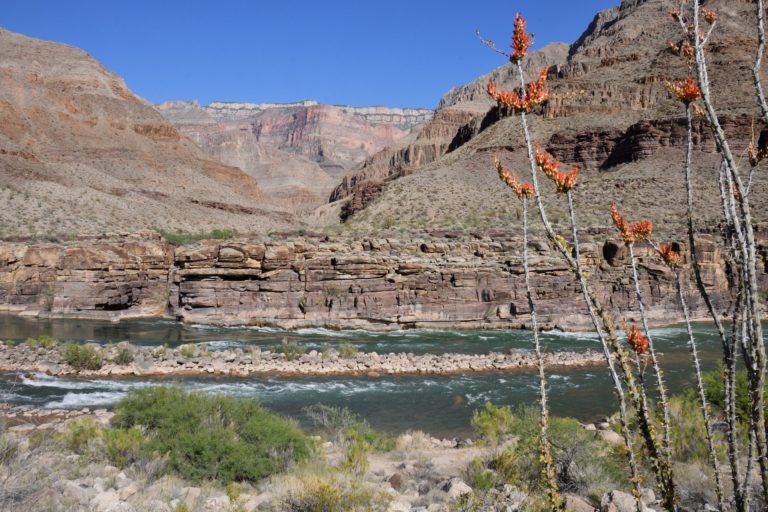
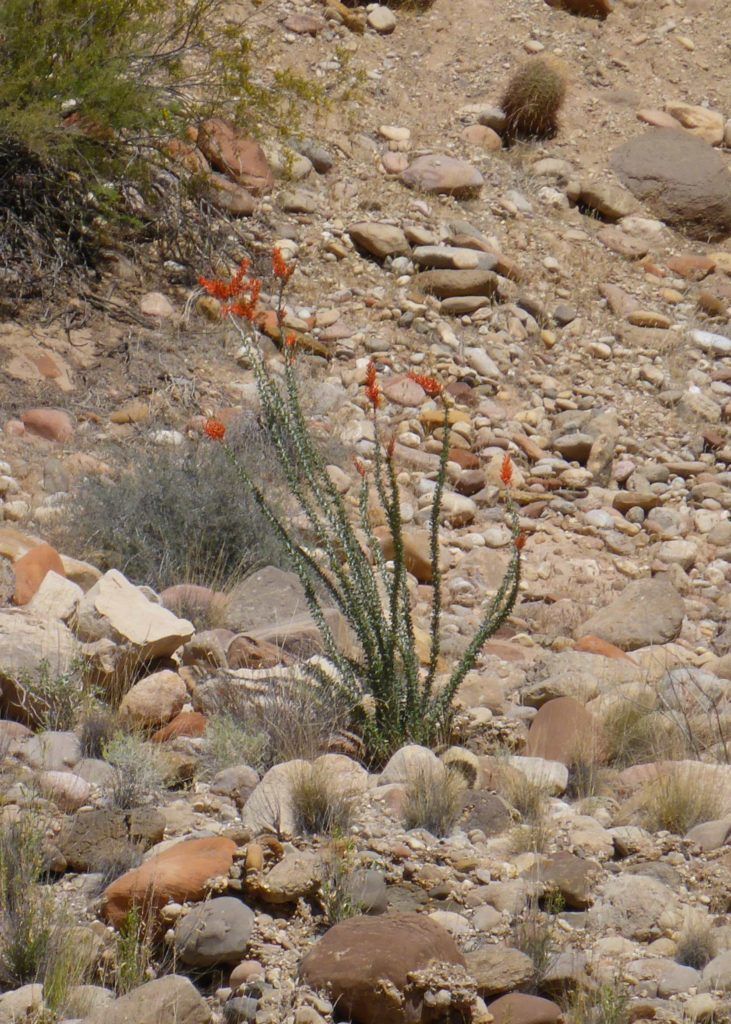
Prickly Pear Cactus
The thick green pads of a Prickly Pear Cactus work as branches and are where the moisture for the plant is stored, and where photosynthesis happens. These pads can range anywhere from 4-18 inches in length, and as wide as 9 inches. The plant itself can be anywhere from 1 to 7 feet tall! The spines on the pads are called tubercles and are actually the cactus version of a leaf. They grow from smaller clusters of spines on the cactus. You’ll want to stay away from these parts, they can cause mass irritation and the smaller spines are hard to get out of the skin.
During the spring, the cactus blooms a beautiful flower on the top of the green pads. Eventually (in the late summer or early fall) the flowers give way to a fruit that ripens on top of the plant (hence the name prickly pear). These little fruits can actually be taken off and eaten raw (although we recommend learning how to peel them first and wearing gloves when handling them), or there are a number of recipes that you can use them in. Some of the most popular are Jellies, James, Candies, and Drinks!
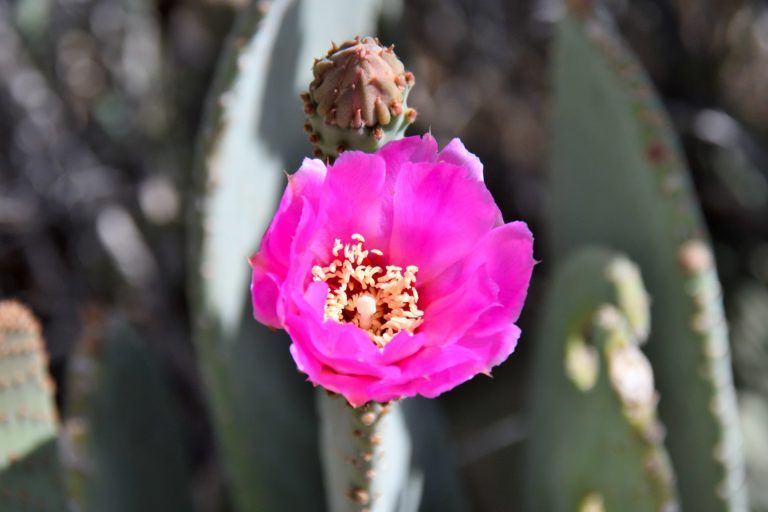
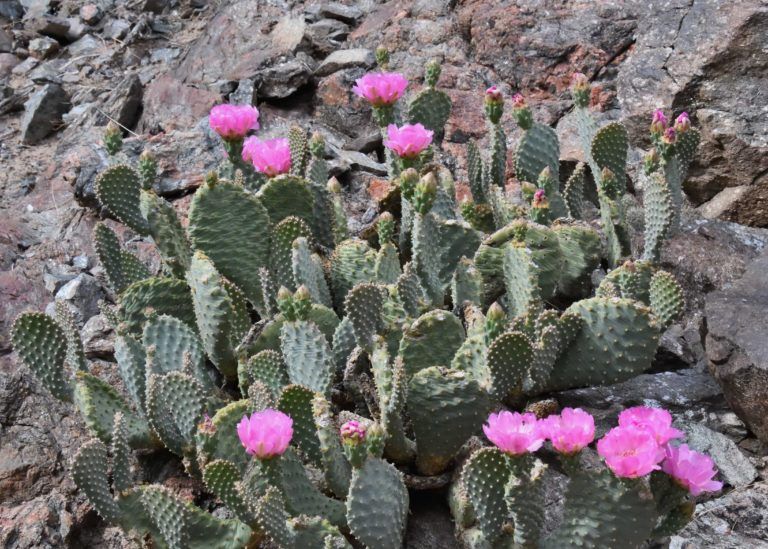
Red Monkeyflower
The Red Monkey Flower is a plant that grows close to the water and spreads easily when it has access to water. It’s got red, tall flowers that can bloom year-round (so long as it doesn’t frost) with shiny green foliage. The leaves of the Monkey Flower get sticky and curl in the heat – so they prefer to have a little shade.
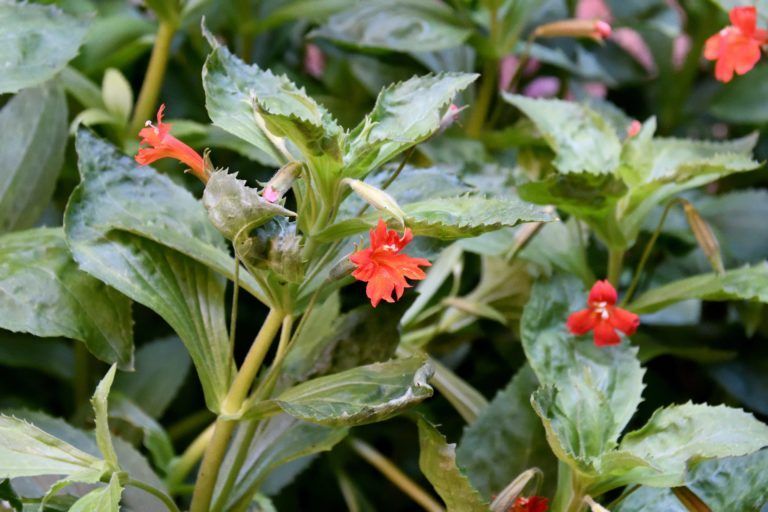
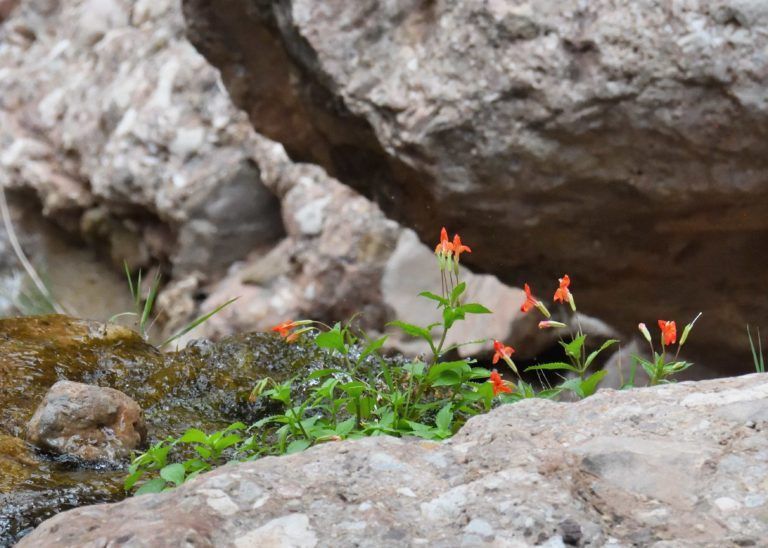
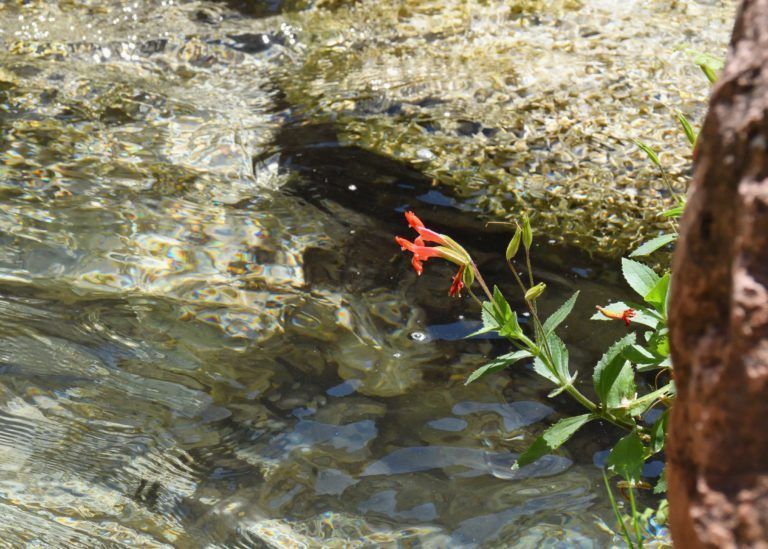
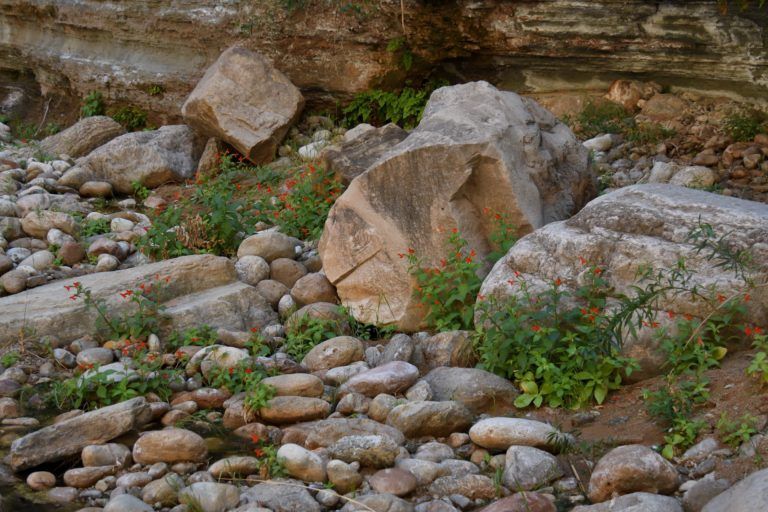
There are many more flowers and plants that call the Grand Canyon home – so look for more in Part 2. (Coming soon!)


